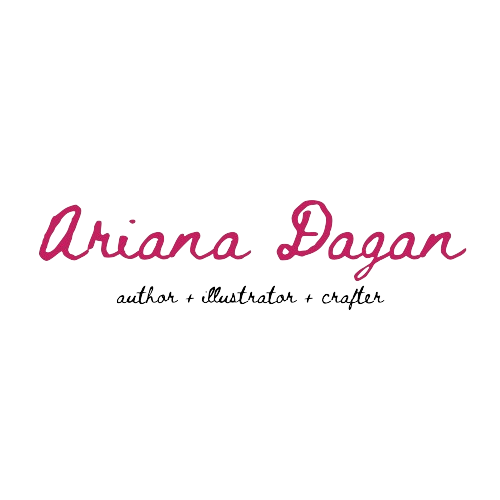This post may contain affiliate links.
It’s a disease of distraction, a poison to all great ideas, the drowner of great ships. I’m sending out an S.O.S. because I’m talking about Shiny Object Syndrome. Even if you’ve never heard the name, you probably know exactly what I’m talking about. But let’s dig deeper.
Day in the Life of a Creator with Shiny Object Syndrome

You’ve been digging into your project for a while. Maybe its been a day, a week, 3 months, or a year (whatever “a while” is in your creative terms). You’re starting to gain momentum, and the project is beginning to take form. You can’t see the light at the end of the tunnel yet, but you know it’s just beyond that edge. You’re sitting proud, deciding to take a snack break and it happens.
Another idea pops into your head.
It’s fantastic. It’s amazing. It blows your current project out of the water. You scribble it down so you won’t forget it, but after your snack break, it’s all you can think about. You’re so afraid of losing the ideas on the new project you jump headfirst into the next idea knowing that as soon as you get the ideas out you’ll go back to the original project…
…but you’re starting to gain momentum, and the project is beginning to take form. You can’t see the light at the end of the tunnel yet, but you know it’s just beyond that edge…oops, sound familiar?
Introducing: Shiny Object Syndrome.
Many creatives find themselves falling victim to this syndrome for a myriad of reasons. But let’s rewind for a moment.



What is Shiny Object Syndrome?
Picture a kid playing with a ball. They love this ball, it’s their favorite in the world. Then they see a shiny object in the grass. Immediately they forget about the ball and jump on the object. For creatives and entrepreneurs, this is a way of life. Constantly distracted by the next great idea. Often its described as evil, the destroyer of entrepreneurs, a distraction disease (one of many interestingly).
But what is it? It’s simply an idea. As creatives and entrepreneurs, we are idea generators. It’s how we stay alive. Without constant new ideas, we’d have nothing to create and a part of our soul would die. Shiny Object Syndrome is simply another idea popping up at an inopportune time that distracts us from our current idea.
How does Shiny Object Syndrome affect creators specifically
As previously mentioned, creatives and entrepreneurs are idea generators. This makes us unique from the general population because we need ideas to fuel our creative side. Even more so, we need curiosity. Curiosity to learn, to soak in new information, try new things, experiment, and test boundaries. Shiny Object Syndrome feeds on this curiosity.
But here’s an interesting twist. When we stop focusing on something, our brain continues to work in the background and the quiet of not focusing on a specific problem allows our brain to work more effectively. So when we stop focusing on coming up with new ideas because we’re busy with one specific one…we’re actually allowing our brain to generate new, well thought out ideas. Hence why when we’re so close to finishing our current project, that’s when this amazing, unforgettable, potentially life-changing idea pops into our head.



This isn’t evil. Or an act to destroy creators. Or even a disease of distraction in my opinion. It’s a gift from our subconscious. Remember, these ideas tend to be far better thought out than ones we jump on the minute it crosses our mind during a brainstorming session. That’s why the pull to explore them is so strong. That’s why it’s so easy to get distracted by them. Because 9 times out of 10 (not an actual stat FYI), it really IS a good idea.
So what’s a creator to do?
There are a lot of schools of thought on this topic. Many believe in squashing Shiny Object Syndrome. It’s the destroyer of entrepreneurs. And you really can’t blame them for this. If we’re constantly jumping from idea to idea – we never finish an idea. Now we’re idea generators, but no longer creators.
While you will never hear from me “just ignore the new idea”, we do need to tame your enthusiasm, organize your priorities, and focus your goals in an exciting way.
Create Priorities and Goals
The easiest way to ensure your great ideas stay great is to have an effective goal-setting process in place that allows you to reach far, while still hitting goals. For some, this may include daily goals, while others prefer the bucket system for a week or even a month. Some individuals may prefer a meticulous system that breaks down their daily schedule into hourly goals and others may prefer more of a flexible time blocking system. There are too many options to mention here, but there are many others mentioned in this great roundup of goal setting tips, tricks, and strategies.
When you’re ready, take a moment to look through those strategies to find one to try. It may take some trial and error to find one that is right for you, but it will make things far easier in the long term once you do. Goals allow you to set up the best use of your time, to allow for flexibility when great projects come into view, or acknowledge when you can’t let shiny objects derail you.
Once you’ve implemented a goal-setting process in place, you need to stay on track and put your best foot forward. I have another series for jump-starting productivity in the morning and additional productivity tips and strategies to help keep you on track.
When shiny object syndrome hits, it’s easy to forget about literally everything else. As previously mentioned, these ideas tend to be better thought out than your normal ones. But there’s a caveat. Not always. For example, if you’ve been diligently working on a project for 5 minutes before the next great idea pops in – that’s not enough time for your brain to think it thru so don’t assume its as great as it looks at first glance. So what’s next? Evaluation time!



How to Evaluate Your Shiny Object
Using the aforementioned goal-setting skills will help you hone in on where to put shiny new projects. You’ve already dissected the importance, but comparing their evaluation scores to your current project evaluation scores will help you figure out how to prioritize them in your goal setting. However, just because a new project has a better score, doesn’t automatically mean you should drop the current project. It means you should further evaluate. Consider some of the following questions as you make your decision:
- How much time would you have to dedicate to completing the new project versus how much time is left with the current project?
- What is the return on investment (ROI) for the new project versus the current
- How immediate is the ROI (if any)?
- How will your life look different during the process of creating the new project versus the current project
- How will your life look in one year after completing the new project versus the current project
These questions can help you determine if it’s worth dropping the current project entirely, pushing until after your complete the new project, or simply putting the new project idea after you complete the current project. Normally I strongly encourage instinct for decision making, however, I do believe that facts such as the questions above are key to making this type of decision.
Establishing AN EFFECTIVE ORGANIZING SYSTEM
Finally, whether you’ve decided to push the new project idea until later, or push the current project until later – you will need an effective system to organize your ideas so that when you get to them, you will be equally dedicated to the idea and be able to pick up your enthusiasm right where you left off!
There are far too many options to attempt to list all, but you know yourself best. Consider what type of organization works best for your day-to-day. Are you more of a digital organizer or an analog organizer? Now apply that method to your amazing ideas! Here are a few ideas to get you thinking:
- Spreadsheet
- Word Doc
- Notebook
- Use an app such as Evernote
- Sticky notes
- Whiteboard
- Card catalog
- Filing Cabinet
Where you keep your ideas is only half the solution, the harder, and more important part is how you keep those ideas.
Use relevant hashtags, keywords, and descriptions for each idea as it comes in. In fact, brainstorm for a good 5+ minutes to get every idea you possibly can out in your system. This will allow you to create a more effective organization system for when you look through your ideas at a later date.
Not only will you have a more complete idea long after the initial inspirtation has passed, but you can also now compare this idea to other similar ones (IE: using similar descriptive words), and see how they could potentially be used together, see similarities to be combined, or simply see one is better than another and one could be removed entirely from the organization system!








Ready to get started? Drop a comment below and let me know how YOU deal with your shiny object ideas!







I love this! Because the shiny object syndrome is starting to go awry over here. I love how you reframe this so that we work with this issue not against it. There’s just a better way to get things done and set goals so if we work the whole shiney object issue in then that’s much more helpful!